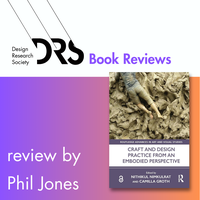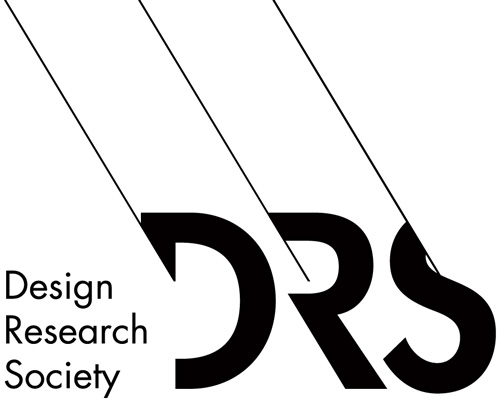
Book Details
Craft and Design Practice from an Embodied Perspective
Edited by Nithikul Nimkulrat and Camilla Groth
Routledge
2025
238 pp.,
52 b/w illus.
ISBN: 9781032356815
Is craft still viewed as something of an adjunct to the industrialised, mass produced, third machine age perspective of the mid to late twentieth century? Such a perspective foregrounds a way of working in which things are made from pre-designed schematic plans, using homogeneous materials with measurable predictable properties, produced remotely and automatically so that the outcomes are identical manifestations of the predetermined specified design—within certain tolerances at least. This is perhaps still the prevailing view with respect to how things are produced, and it stands in contrast to others that focus on the individual, unique, bespoke thing, that emerges from an inter-action between maker and material—an approach that characterised the pre-industrial ages, but one that has survived and flourishes to this day.
But what was, to some, considered to be the outlier, or, the ‘traditional’ rather than the mainstream, or, ‘contemporary’, can potentially be revitalised by new conceptual tools. And this comes at a time when we are entering, reportedly, not the fourth but the fifth, industrial revolution. Craft and Design Practice from an Embodied Perspective arrives therefore, at an interesting moment in time. The excellent introduction clearly and concisely captures the history of the field, and the book as a whole, demonstrates how relatively recent ideas about the embodied, the enacted, the embedded, and extended (4E Cognition) have invigorated thinking in relation to craft and design practices. And it encourages one to think about how this understanding might lead to new approaches that utilise new technological advances.
Every time one mentions new thinking one inevitably goes back to ancient Greece—in this case there is the concept referred to in multiple chapters of the book—hylomorphism—and the idea that physical objects are a combination of form and mat-ter. This assertion, which seems superficially straightforward, seemingly underlies a significant amount of questioning in the book. To what extent does form arise from an engagement with material, and conversely, to what extent does form determine how mate-rials are actualised in an artefact or product? Alongside these relationships between matter and form is the relationship between maker and material. To what degree is materiality exterior to the embodied understanding of the maker? Is the responsiveness of materials only a phenomenological experience, or, is this responsiveness reflective of materials having an independent existence outside of human experiencing? If so, what degree of agency should be granted to both the makers, and the materials they engage with?
As an example—since it is impossible in a review of this length to give justice to each chapter—Groth and Kimmel describe how the nature of clay, amongst other things, changes over the course of throwing a pot—its moistness, rigidity, and so forth. Here there is an ongoing dynamic providing opportunities for affordances to register, suggesting future actions which might involve levels of risk, as well as different potential forms that could result. Because both the final form of a vase, and the potter’s actions in making it, are not absolutely predetermined there is an emergent aspect which feels dialogic (using both senses of the word ‘feels’). While I am sure the craftspeople concerned have an understanding of material science too, it is this embodied experiencing of mate-rials and tools that is highlighted, and after reading the accounts provided in the book it is difficult to imagine achieving a mastery of a craft without a similar level of integration between, maker, tools, and material.
The first section of the book deals with more familiar, typical examples of craft; pottery, glass-blowing, textiles, and so forth. The second section goes on to explore how craft principles apply in relation to the digital and virtual. And this helps us to think of craft, not as a way of hand-producing relatively fixed categories of things—pottery, glassware, and so forth, but as a complementary way of producing things more widely. Justin Mar-shall, in his chapter, points to ‘differences between a craft and an industrial design‑oriented mindset’ leading to two complementary theoretical frames, one which amongst other things, values, ‘fidelity’ over ‘accuracy’, ‘sensitive making’ over ‘efficient manufacturing’, ‘uniqueness’ over ‘infinite replicability’, and so on.
The final section concerns craft produced artefacts; what kinds of knowledge do they encapsulate, can they, for example, provide prompts that enable us to recognise the experiential knowledge of the maker? Furthermore, how do we think with or through these artefacts, particularly when they are made from smart materials? Such questions are ex-plored in relation to participatory design as well as craft, and resonate with ideas from distributed cognition, and with Hutchins’ concept of material anchors.
In several places I found myself trying to reconcile the descriptions of making and experiencing with the Embodied Realist position elaborated by Lakoff and Johnson that I signed up to some 25 years ago. There are metaphysical implications with respect to 4E Cognition that I struggle with, and these descriptions of making are helpful in bringing these issues into sharper focus—ontological commitment, reality, truth, for example.
Overall the book does an excellent job of applying a theoretical framework to a range of craft and design practice, and by doing so places accounts of making on a firmer footing. It also finds space to allow for contrasting ideas to be expressed. The Afterword by Tim Ingold acknowledges the contributions provided by the authors, but introduces doubts about 4E Cognition more generally, that should ignite debate and encourage us not to passively accept its characterisation of thinking and making.
As we increasingly converse and collaborate with AI agents we can expect questions about the value of different forms of engagement between human and non-human, and makers and material, to come to the fore even more. By setting the scene so convincingly with regard to craft, design and 4E Cognition the volume is a useful contribution to the foundation on which we must build.
Phil Jones is MA Graphic Design Course Leader at Arts University Bournemouth.
- Lisa Meaney likes this.
